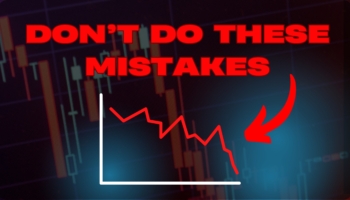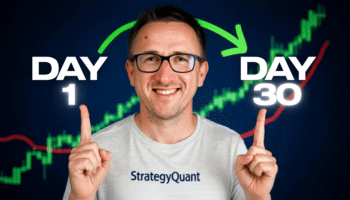In StrategyQuantX version 140, we’ve made important updates to the Portfolio Master to improve how capital, trade sizes, and risk are calculated. These changes ensure that merging strategies provides a more realistic view of performance, while also enhancing the accuracy of trade size calculations based on portfolio balance. With these improvements, traders can create portfolios more accurately, improving risks keeping within set limits.
Let’s describe improved functionality in more detail:
Initial Capital Calculation when Merging Strategies
Until now, when merging strategies, the Portfolio Master would sum up the initial capital of each individual strategy. This could be misleading because, if your account balance is $100k and you merge 10 strategies, the drawdown might appear to be 20% on the charts. However, in reality, your drawdown could be 10 times greater. A trader cannot multiply the size of their account based on the number of merged strategies.
This is why the Portfolio Master’s equity is the same as the strategy equity set in the money management parameters.
Overlapping Trades are Filtered
Filtering overlapping trades provides more accurate portfolio results and ensures that the overall risk stays within tolerance levels. Opening multiple trades simultaneously can increase the portfolio’s risk percentage beyond the set limits in the money management, leading to an unrealistically high net profit.
Trade Size Recalculated Based on Portfolio Balance
Each trade size is calculated according to its own parameters within each strategy and is now based on the Portfolio’s capital. For example, if the money management risk is set at 5% of the balance:
- A strategy with a 20-pip stop loss might trade a contract size of 4.
- Another strategy with a 40-pip stop loss might trade a contract size of 2, using the same capital.
This differentiation is normal, as each contract size is determined by its own stop-loss parameters. With this trade size recalculation, the Portfolio’s statistical results become more accurate.
We would like to thank our community for their support and feedback.




I want to ask if QuantQnalyzer4 also adds the initial capital of each individual strategy when merging strategies? If so, will this error be fixed and when?
Sure, let’s break down the improvements to the Portfolio Master functionality in StrategyQuant v140 in simple terms: What is the Portfolio Master?The Portfolio Master is a tool in StrategyQuant that helps traders manage and analyze a collection of trading strategies. It allows you to combine multiple strategies into a single portfolio and see how they perform together. What Has Been Improved? Better Calculation of Initial Capital When Merging Strategies: Old Way: When you combined multiple strategies, the Portfolio Master would add up the initial capital of each strategy. This could be misleading because it made it seem like you had more… Read more »
this could be helpful but is there a way to skip overlapping trades also while we deploy portfolios in Meta Trader 4/5? something like an EA that stop execution when max risk is reached (like a sum of all stop loss of the open positions)?
Great improvements in StrategyQuant v140! The updated Portfolio Master makes it easier to manage real-world trading scenarios with better risk and capital calculations. Speaking of complex strategy and terminology, if anyone’s curious about the meaning of “nonge” as used in the TV series Adolescence, I recently came across a helpful explanation at https://nonge.uk/. It’s a deep dive into the cultural and narrative context behind the term “nonge”—worth checking out for fans of the series or anyone interested in unique media language!